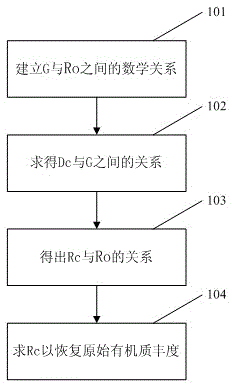Method for calculating original organic matter abundance recovery coefficient
A technology of organic matter abundance and restitution coefficient, applied in the measurement of scattering characteristics, etc., can solve the problems of difficulty in obtaining key parameters and high cost
- Summary
- Abstract
- Description
- Claims
- Application Information
AI Technical Summary
Problems solved by technology
Method used
Image
Examples
Embodiment Construction
[0078] In order to make the above and other objects, features and advantages of the present invention more comprehensible, preferred embodiments are listed below and described in detail in conjunction with the accompanying drawings.
[0079] Such as figure 1 as shown, figure 1 It is a flow chart of the method for calculating the restoration coefficient of original organic matter abundance in the present invention.
[0080] In step 101, the mathematical relationship between the hydrocarbon generation rate of each organic matter type and the vitrinite reflectance is established. The hydrocarbon generation rate (G) refers to the mass of hydrocarbons produced per gram of organic carbon when the thermal evolution of the source rock reaches a certain level. impact on indicators. The potential maximum hydrocarbon generation rate of the source rock when it is immature is the original hydrocarbon generation rate of the source rock (Gy). Such as Figure 2 to Figure 5 As shown, the ...
PUM
 Login to View More
Login to View More Abstract
Description
Claims
Application Information
 Login to View More
Login to View More - R&D
- Intellectual Property
- Life Sciences
- Materials
- Tech Scout
- Unparalleled Data Quality
- Higher Quality Content
- 60% Fewer Hallucinations
Browse by: Latest US Patents, China's latest patents, Technical Efficacy Thesaurus, Application Domain, Technology Topic, Popular Technical Reports.
© 2025 PatSnap. All rights reserved.Legal|Privacy policy|Modern Slavery Act Transparency Statement|Sitemap|About US| Contact US: help@patsnap.com



